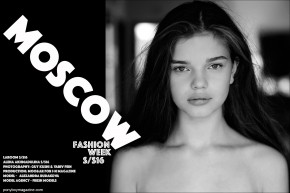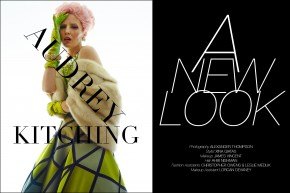DATED VINTAGE
MENSWEAR
Dated Vintage is an eclectic New York City showroom, featuring both men’s and women’s vintage finds from the 1930s-60s, curated and owned by husband and wife team Sonya and Tony Abrego. We first met the duo some years back at a rockabilly weekender and were immediately in awe of their personal style. Sonya and Tony are always dressed in the most fabulous vintage clothing, and they have parlayed their keen sense of style into a business that caters to both designers and stylists, as well as the general public. We asked them to style this menswear editorial, which features the handsome young drummer Ben Heymann as our model, from New York City band The Bothers. Photography AlexanderThompson. http://datedvintagestyle.com
PONYBOY: Sonya and Tony, how did the two of you meet?
SONYA ABREGO: We met at Otto’s Shrunken head in 2008! We were selling vintage clothing at flea markets and online for a while and started Dated Vintage three years ago.
TONY ABREGO: Yes, we meet at Otto’s. I was visiting from San Francisco, and our friend Masako from Tokyo introduced us.
PONYBOY: Sonya, tell us about your background.
SONYA ABREGO: I’ve been in New York City for almost ten years. I worked with vintage clothing in Montreal and moved here to study. I just completed my Ph.D. at the Bard Graduate Center last June, and teach fashion history courses at three different colleges at the moment.
PONYBOY: And what about your background Tony?
TONY ABREGO: I’ve been collecting and picking vintage clothes for over twenty years. I’m also a costumer and stylist. I have worked on many TV shows, as well as a few movies.
PONYBOY: How did you start getting into wearing vintage clothing?
SONYA ABREGO: I always liked expressive clothes and looking different. I was first buying vintage with grunge in junior high, but then got into punk rock and 50s rock ‘n’ roll by the end of high school. I was piecing things together intuitively, as there wasn’t any “scene” for that kind of thing where I come from. And there weren’t many online sources, apart from eBay. In Montreal, I was more focused in what I wanted as a look, but also had more time to shop and I was buying for a store. Having a lot more clothing pass through my hands made it easier to be discriminating.
TONY ABREGO: I have loved clothes since I was a kid. I got my first piece of vintage clothing from my great grandfather, a 1950s gabardine jacket. I was thirteen years old. However, it was in high school when I started to thrift every weekend. And I also paid more attention to vintage clothes.
PONYBOY: How would you describe your own personal vintage style now?
SONYA ABREGO: Entropy, it’s in a state of decay. I sell the better pieces and keep the damaged ones for myself. Most of what I wear ranges from the 30s through early 60s, but I don’t think about style in terms of decades when I’m getting dressed. Identifying the date is for selling things and knowing where they came from and what they’re worth, but doesn’t really factor into putting an outfit together for me.
TONY ABREGO: Working-class rock ‘n’ roll dandy! I love stuff from the 1930s and 1950s. Some of my style influences are Pedro Infante (the Mexican movie star from the 40s and 50s), 1930s photos of workers, 1950s rock ‘n’ roll, 70s punk rock, as well as people like Little Richard, Gene Vincent and Malcolm X.
PONYBOY: Vintage clothing has strangely crept into the mainstream. Tell us your thoughts on this, being vintage clothing aficionados.
SONYA ABREGO: Mostly, I think it’s great in terms of sustainability. There are enough clothes in the world already, and it can mean new customers! But it’s also funny to experience “fashionable” vintage because I’m a subculture kid at heart and was wearing it to set myself apart. A lot of trendier vintage is styled to look fashionable and contemporary, which is about fitting in, a totally different mindset.
Also, the access today is incredible with so many outlets online, but then all of a sudden, it’s like everyone’s an expert in two dimensions, so I guess I’m ambivalent.
TONY ABREGO: In the 21st Century most things are mainstream. What sets you apart from the herd is your own personal style, how you wear the stuff and what it means to you personally.
PONYBOY: Has it become much harder to find vintage clothing, say from the 1930s-50s? Or, is it still pretty accessible?
SONYA ABREGO: We work hard but can still find it! It depends on the pieces, but it’s getting harder for sure.
TONY ABREGO: A lot harder than when I started looking for stuff, you know. I used to go to thrift stores and flea markets and find lots of stuff for a good price. I’m talking about 30s, 40s and 50s. Now you have to work a lot harder to find it.
PONYBOY: As far as US vintage stores are concerned, which do you feel are the absolute must for shopping, in regards to the merchandise and overall aesthetic?
SONYA ABREGO: I’m a ragpicker. I make a retail purchase maybe once a year! I like Stock Vintage here in New York City, Relic Vintage in San Francisco, and Bobby’s from Boston.
TONY ABREGO: Mr. Freedom in Los Angeles, 9th St Haberdashery in New York for women, Paula Rubenstein for objects, as well as the stores that Sonya had already mentioned.
PONYBOY: Sonya, you have quite an extensive background in vintage clothing being a fashion historian. Tell us about your education and experience.
SONYA ABREGO: I’ve worked with antique and vintage clothes through archival research, museum collections, and the resale side, which covers a lot! Academic work shares a few things in common with finding old clothes – lots of attention to detail, patience and sifting through historical material. I take a cultural history approach to clothes, so there’s a “What is this, how was it made and who made it?” But also, why was this style successful, what was the appeal at one time more than another, and what can that tell us about our culture. Those kinds of questions interest me.
My Ph.D. dissertation looked at Western wear from 1945-65, and how big manufacturers shifted from selling to working cowboys to mainstream consumers. The garment designs barely changed, but the cultural environment, people’s ideas about propriety and the market, did. Those kinds of things I like to analyze and pick apart.
The best thing about historical work for me is looking at clothing outside of taste, or at least my own taste, and thinking about what story the garment is telling and what piece of the cultural puzzle that represents.
PONYBOY: Fascinating. Tony, please tell us about your work in the entertainment industry.
TONY ABREGO: I’m in the wardrobe union as a set costumer. I make sure nothing goes wrong with the wardrobe while the scene is being filmed. In the past few years I have worked on America’s Got Talent, Alpha House (a TV show on Amazon), Three Generations, which is a movie with Susan Sarandon and Naomi Watts, The Mysteries of Laura, etc.
PONYBOY: What are your thoughts on the West Coast/Los Angeles vintage industry, as opposed to East Coast? How do they differ?
SONYA ABREGO: I feel like, for what we do, it’s a smaller market of buyers and sellers here, than on the west coast. New York is always a bit more trendy. On the West coast, I see people wearing vintage in different ways.
TONY ABREGO: In LA you have more young people being a part of a subculture, like skinheads, mods, punks and the 50s rock ‘n’ roll scene. So, people tend to wear vintage more in a way to be identified with their respected subculture. New York is much more fashion-oriented and influenced by trends or a lifestyle.
PONYBOY: And finally, if you had to name one designer or clothing label that you feel is your personal favorite, who would it be?
SONYA ABREGO: Hmmm…I’m bad at picking favorites. I like Marni for their textiles and Thom Browne for men’s or women’s because you never know what’s coming. And I didn’t think I would, but I’m loving the revived Schiaparelli collections.
TONY ABREGO: I like Vivienne Westwood, Paul Smith and Mr. Freedom, as well as clothing labels from Japan like Sugar Cane, Dry Bones and Harver Sack. From the US, I like RRL and Engineered Garments.





